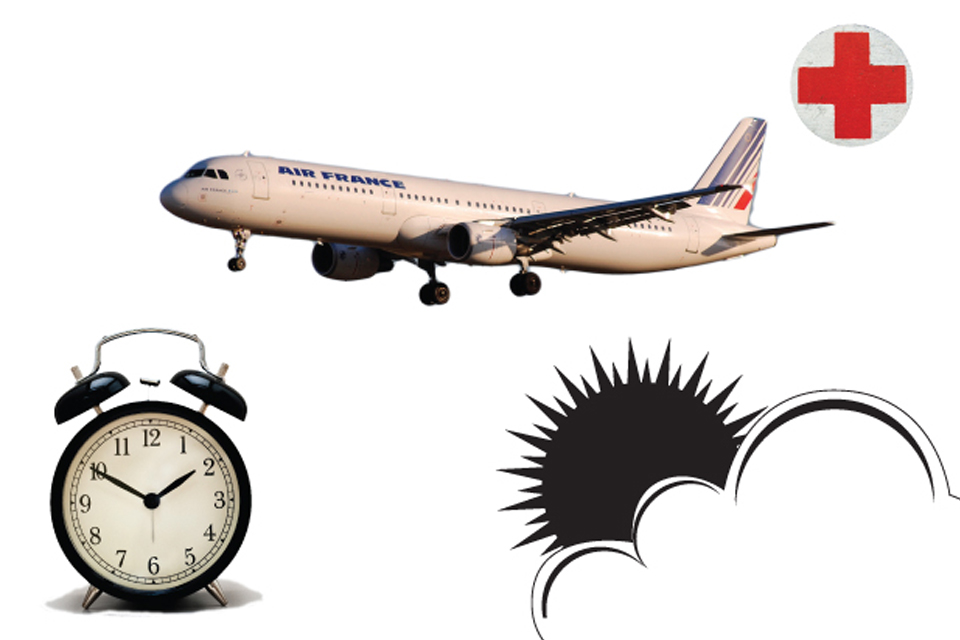Planning for an International Sporting Event

Risk of Blood Clot
Flights longer than three hours increase risk of cardiac event during race and blood clot on flight home from race.
– Wear support stockings/socks
– Walk and move on the plane frequently—book aisle or exit row seat so you can get up more easily
– Give yourself adequate time in new location prior to race (days, if possible) to adjust to jet lag. If you are going to use a sleep aid on the plane, try it out ahead of time.
Time Zones
You will need several days to acclimate to a new time zone; diet, exercise, and sunlight will all help your body sync
– Traveling more than six time zones is more difficult
– If adequately planned, travel across time zones will not have an effect on performance.
Heat and Humidity
– Train in similar conditions prior to race
– Air pollution may cause you to take asthma meds more frequently; plan with your doctor
– Rapid ascent above 2,500 meters may produce altitude sickness (nausea, headache, dizziness, and fatigue) but symptoms may resolve quickly
with descent
– Worsening symptoms can require immediate, life-saving medical care
Hydration
– Avoid dehydration in flight. Drink 1.5 glasses of water each hour (regular-sized glasses, not airplane glasses); aim for 300 cc/hour. Bring your own water/sports drinks and put them in the pocket in front of you as a reminder.
Vaccinations
Follow up with your doctor prior to travel for a full physical/vaccine check (flu, tetanus, meningitis); information about vaccines for specific travel locations can be found at cdc.gov
– Vaccines may take months to be active, so plan ahead. Find out three to six months ahead of time what you need so you will have time to prepare for your event.
Risk for illness with travel
– Traveling more than five time zones makes the risk of illness (usually respiratory or stomach) two to three times greater
– Overall, you have a 20% risk of illness
– Immediately after travel, your risk is higher (32%)
– After returning home, you are at a 10% risk of getting sick
– Bring medical records on your trip, including past medical history, past surgical history, medication list, including doses and timing, list of allergies, and medical insurance coverage
– Consider providing a copy of medical records to your coach, athletic trainer, or doctor if she or he is traveling with you
Obtain a comprehensive physical exam by your doctor prior to travel
– Go over vaccines
– Review risks for illness/injury and cardiac events
– Discuss anxiety about travel/event
– Discuss jet lag, etc.
– Discuss prevention of illness/injury
– Obtain prescriptions for medications that might be needed during travel
– Assume you will not have access to any medical supplies
– Bring wound care, such as bandages and antibiotic ointment, as well as medicines for stomach difficulty (e.g., Pepto-Bismol) and diarrhea (over-the-counter as well as prescription meds)
Eating on the plane
Special meals may be arranged for athletes in advance, such as low fat, high carb, vegetarian, etc.
– Avoid overeating since you will not be moving much on the flight and are tapering
– Avoid coffee, tea, carbonated, and alcoholic drinks since they are dehydrating
– Pack healthy snacks that require minimal storage difficulties in case of layovers or hunger during the flight (fruits, crackers, energy bars, liquid meals)
Create Emergency Plan
Do this with your family
– Members—create a list of contact numbers, share details, know public health resources for your destination






